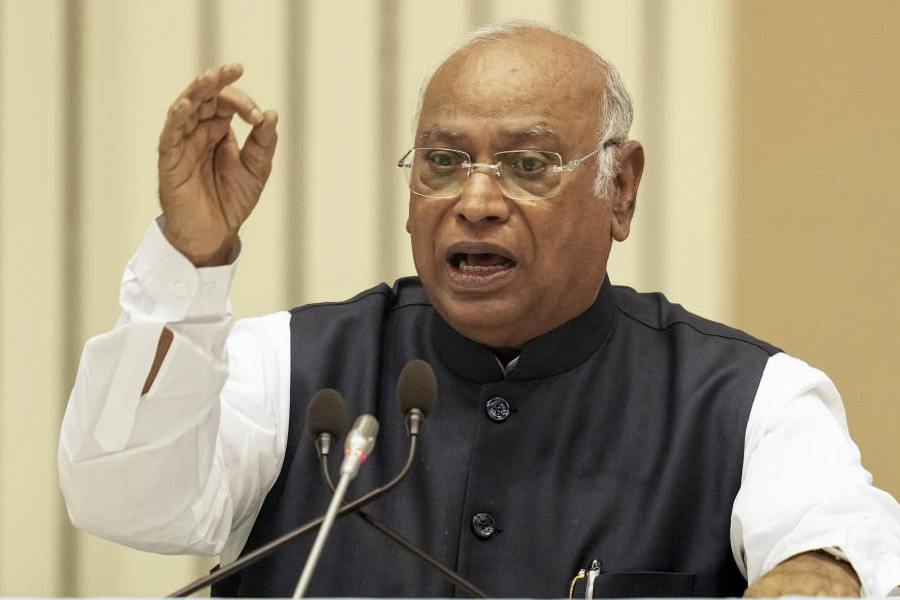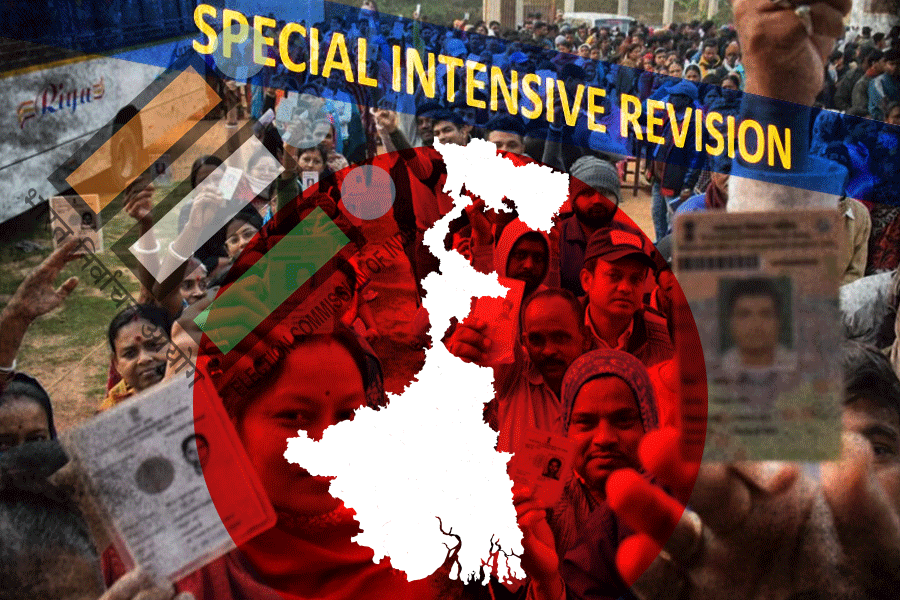
Forty five years ago, a group of villagers in the Alakananda valley stopped a group of loggers from felling a patch of ash trees. Thus was born the Chipko Andolan, the peasant movement that focused popular attention on the depredations of commercial forestry in India.
Following Chipko, there were a series of struggles in defence of forest rights across the country; in Gadchiroli, in Bastar, in Singhbhum, in the Western Ghats. These social movements inspired scholars to study the history of forest policy. Books and essays were written on how the British raj had expropriated wooded areas previously under the control of village communities and constituted them as 'Reserved Forests'. Peasants, artisans and tribals were denied access to these areas, which were now subject to intensive commercial exploitation.
At Independence, a little over 20 per cent of the country's land area was under the control of the forest department of the Government of India. Tragically, a democratic republic continued the oppressive and exclusionary policies of the colonial State. Meanwhile, the pace of commercial felling greatly intensified to meet the growing demands of the plywood and paper industry in particular. Post-Independence forest policies thus led to social polarization, and to massive environmental degradation as well.
Movements like Chipko, and the scholarly studies that came in their wake, compelled a reorientation in priorities. A new forest policy, formalized in 1988, emphasized ecological sustainability and livelihood security over commercial exploitation. The planting of exotic species, once so recklessly promoted regardless of their unworthiness, was now discouraged. The colossal subsidies once provided to private industry - where, for instance, a paper mill was supplied bamboo at one rupee a tonne by the Karnataka forest department while basket weavers had to pay the market price of five thousand rupees a tonne - were withdrawn at last.
The 1988 forest policy, although imperfect in many ways, was a first step towards correcting the mistakes of the past. The Forest Rights Act, passed in 2006, was a second step. This recognized that adivasis in particular depended most on access to natural forests for their sustenance. Past regimes had harshly discriminated against them by privileging private companies over tribal communities. The new legislation sought to reverse this by permitting access to individual tribal families to small patches of State-owned land for personal use and by allowing village communities to collectively harvest bamboo and other non-timber forest produce.
Both social equity and environmental sustainability are critical to the future of our republic. A government committed to these twin goals would move our forest policies much further towards a more inclusive and ecologically responsible direction. Instead, the present government seems bent on reversing the modest gains of the past three decades by making the private corporate sector, once more, the key beneficiary of State forest policies. This is the inescapable conclusion one reaches after reading the 'Draft Forest Policy, 2018' issued on March 14 by the ministry of environment, forest and climate change of the Government of India.
The document begins with sweet-sounding phrases about forests being "essential for the very survival of the human beings". It claims that forest policy must "safeguard the ecological and livelihood security of people, of the present and future generations". There is also a nod to the role of forests in mitigating climate change. However, after three pages of pious phrase-making, comes a paragraph which begins by noting that "productivity of the forest plantations are poor in most of the States", and ends with this killer sentence: "Public private participation models will be developed for undertaking Afforestation and reforestation activities in degraded forest areas and forest areas available with Forest Development Corporations and outside forests."
The draft policy goes on for a full 10 pages, and is (like most government documents) poorly written as well as extremely repetitive. Much of it is unexceptionable. However, in between the anodyne paragraphs are inserted sentences and clauses slyly providing loopholes that only large private corporations can exploit. Thus, on page 5 of the document, six measures are listed, one of which reads: "Suitable location specific Public Private Partnership models will be developed involving Forest Departments, Forest development Corporations, Communities, Public Limited Companies etc for achieving the target of increased forest & tree cover in the country."
Later, on page 7 of this Draft Forest Policy, we find Section 4.4, which is entitled: "Facilitate forest industry interface". This begins: "There is a need to stimulate growth in the forest based industry sector. This sector being labour intensive can help in creating green jobs. Forest corporations and industrial units need to step up growing of industrial plantations for meeting the demand of raw material."
One worries that if this new forest policy is formally adopted by the government, these clauses will be invoked to hand over large tracts of 'reserved forests' to private corporations. A new form of zamindari might be created, with firms favoured by corrupt politicians being handed effective ownership of land currently in public hands. Were this to happen, it would be in complete contravention of the principles of equity and justice. But it would not be without precedent.
Back in the 1980s, the government of Karnataka forged just such a sweetheart deal with a firm called Harihar Polyfibres. A new company called Karnataka Pulpwoods Limited was created, to which were transferred several thousand acres of public land previously used by villagers for grazing and fuelwood collection. Fortunately, a Dharwad-based NGO named Samaj Parivartan Samudaya mobilized citizens to oppose the move. They also went to court to stop KPL's operations. This struggle to reclaim the commons was endorsed and taken forward by the greatest Kannadiga then living, the writer and social reformer, Kota Shivaram Karanth. Eventually, the government backed down, and the company was disbanded.
If paper and plywood factories need timber as raw material, then they should adopt the methods used by, for example, sugar factories and textile mills. They should reach out to farmers, provide them seeds, loans and technical inputs, and ask them in return to grow the trees they need to process for production. These partnerships could be between firms on the one side and individual farmers or farmers' co-operatives on the other. Such a policy, if sincerely and effectively implemented, could lead to wealth creation across a wide swathe of rural India. On the other hand, captive plantations for private corporations will further dispossess those communities which currently depend on common lands and forests for survival.
The new Draft Forest Policy does have one paragraph on farm forestry and the importance of promoting what it calls "Trees Outside Forests (TOF)". It should focus far more on this method of timber generation, while excluding altogether the handing over of public resources to favoured firms or individuals.
Although some 23 per cent of India is legally classified as 'forests', about half of this land is without proper tree cover. A sensible forest policy must focus, first of all, on revegetating barren or degraded areas with indigenous species, which will aid in nurturing biodiversity, protecting water sources and mitigating climate change. The second major imperative of State forest policy should be on securing the livelihood security of peasant and tribal communities who live near reserved forests. However, as currently drafted, this new forest policy imperils these twin objectives by providing loopholes for well connected firms and individuals to exploit in their favour. It must not be allowed to pass.











